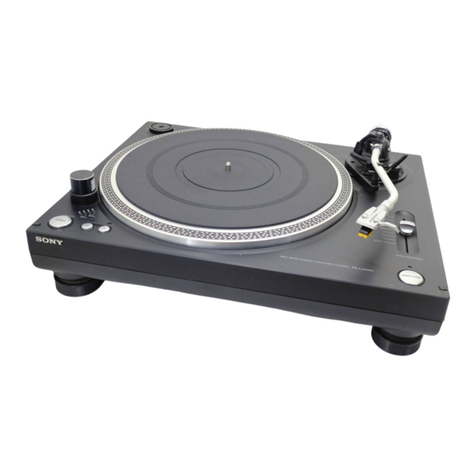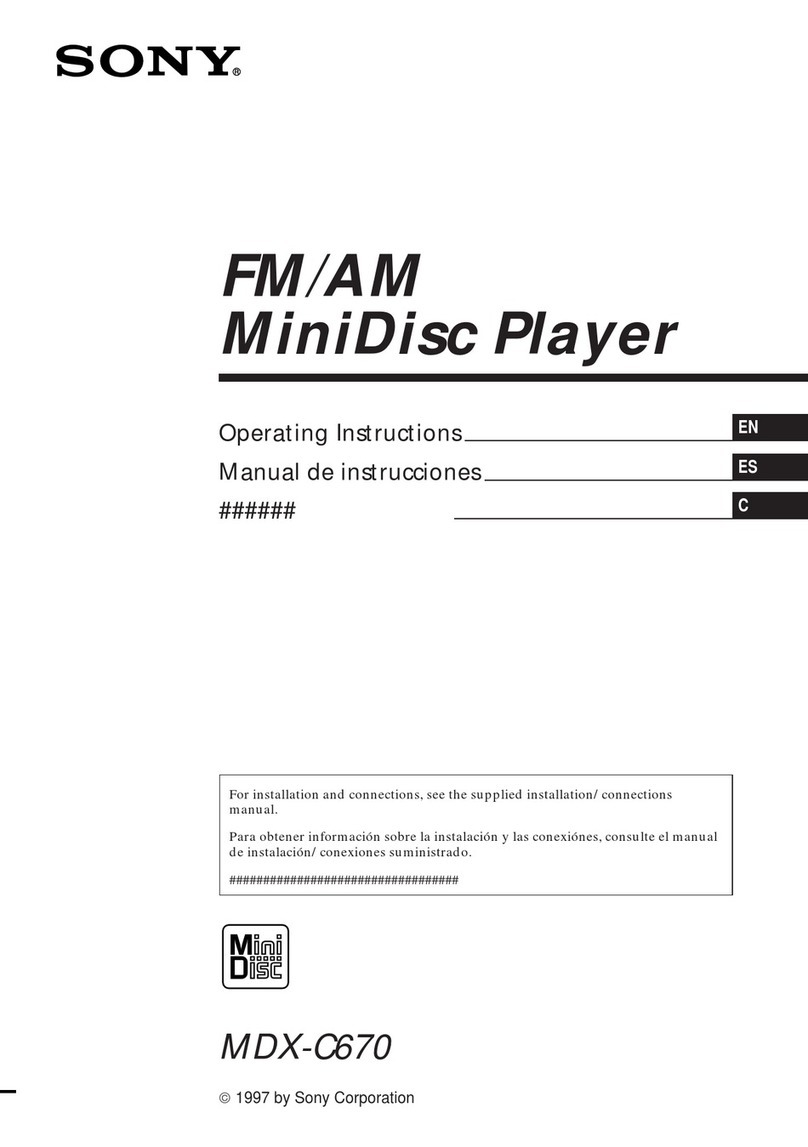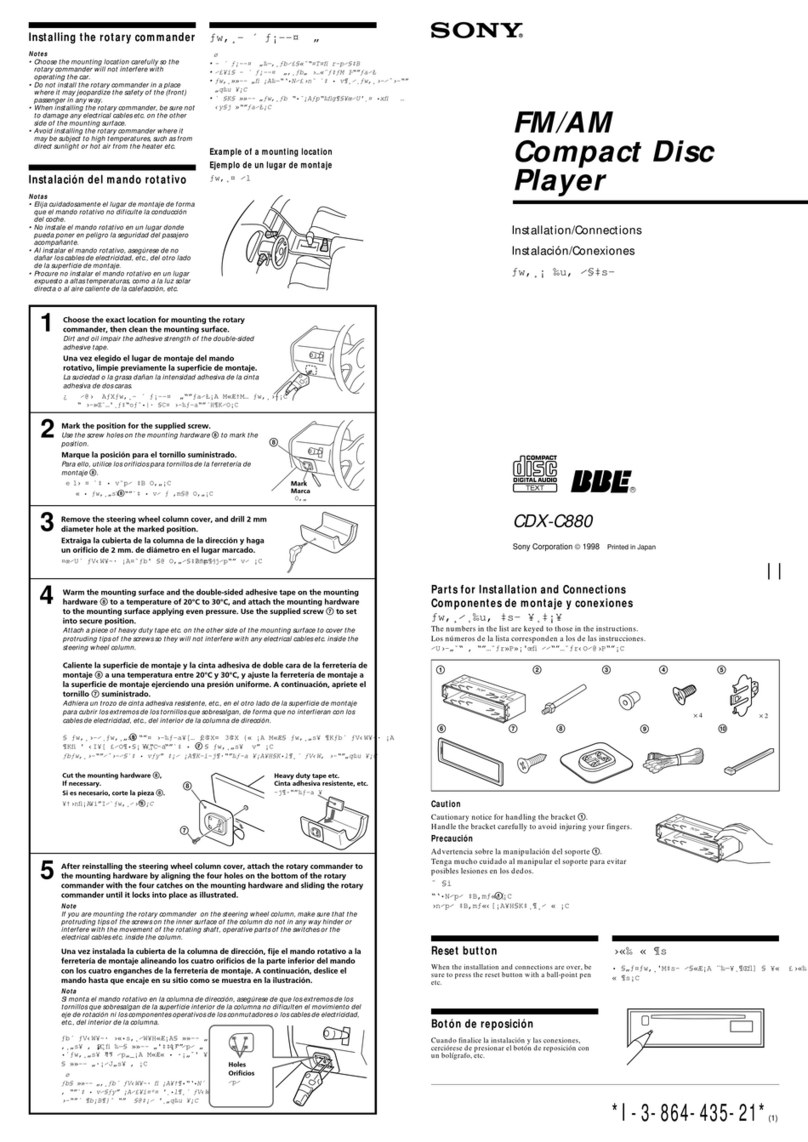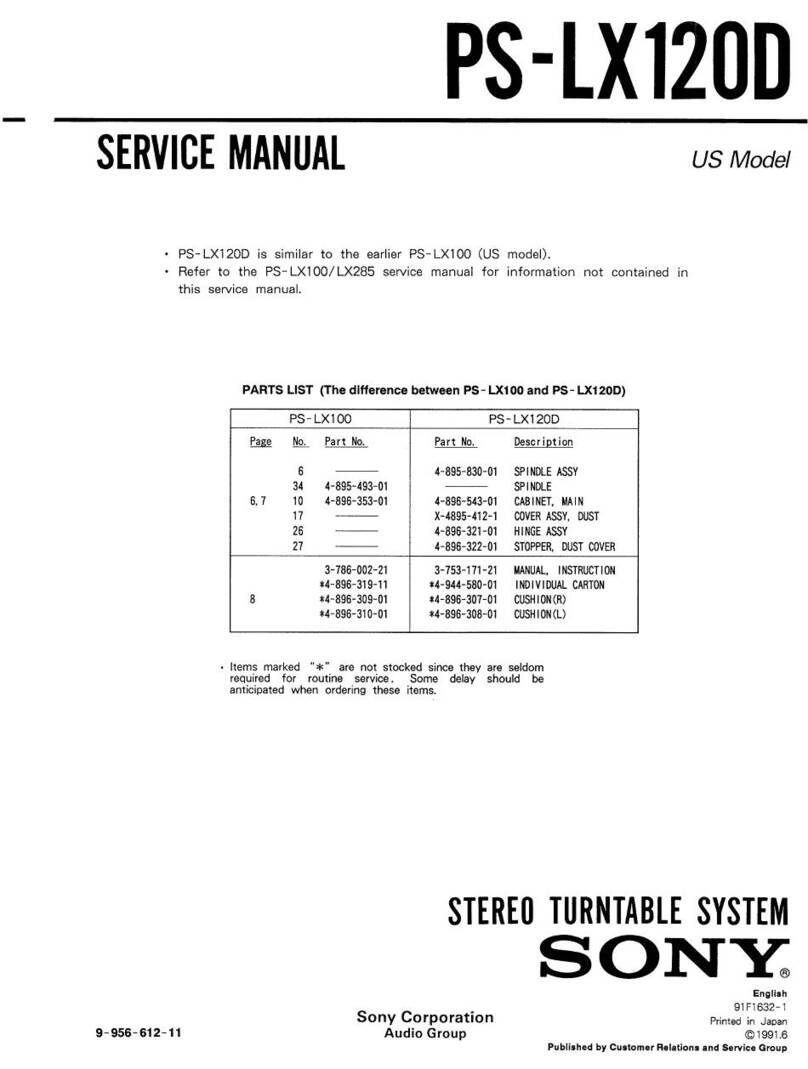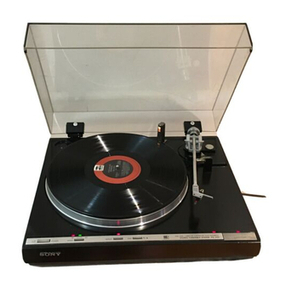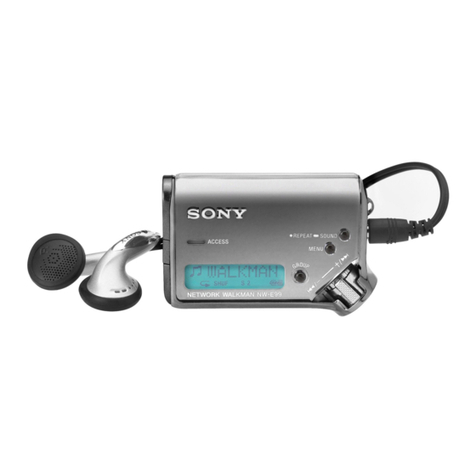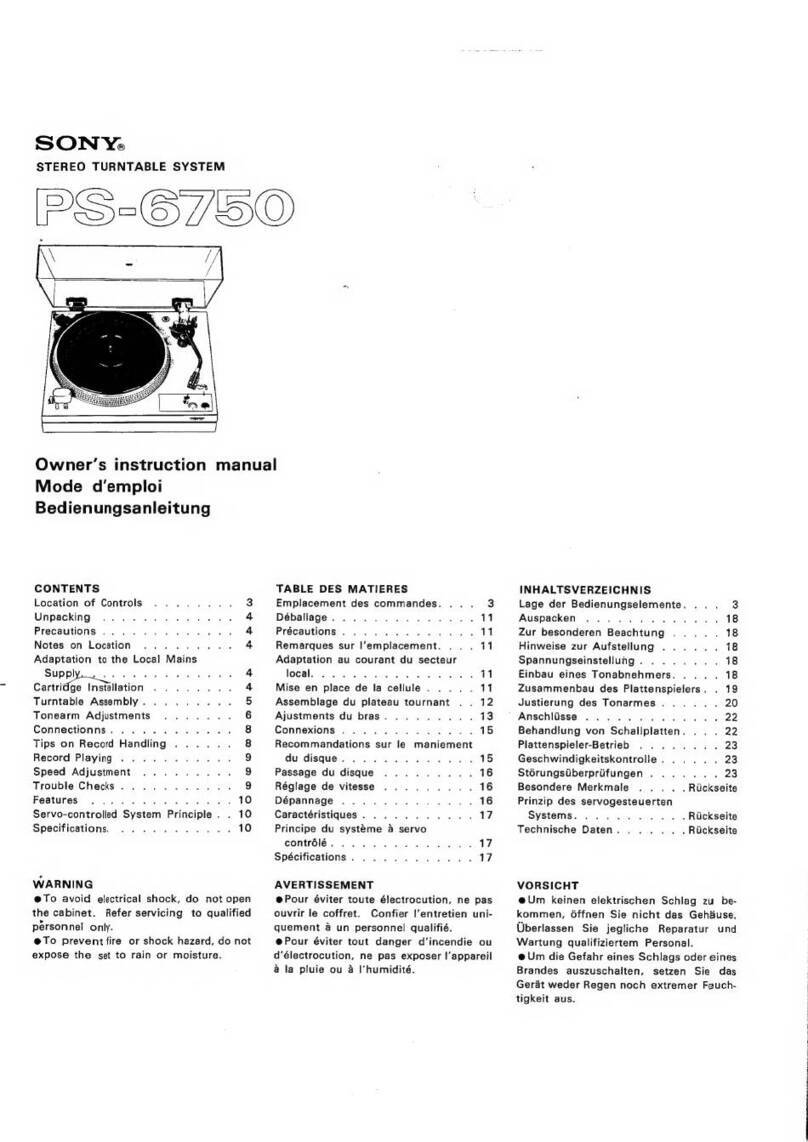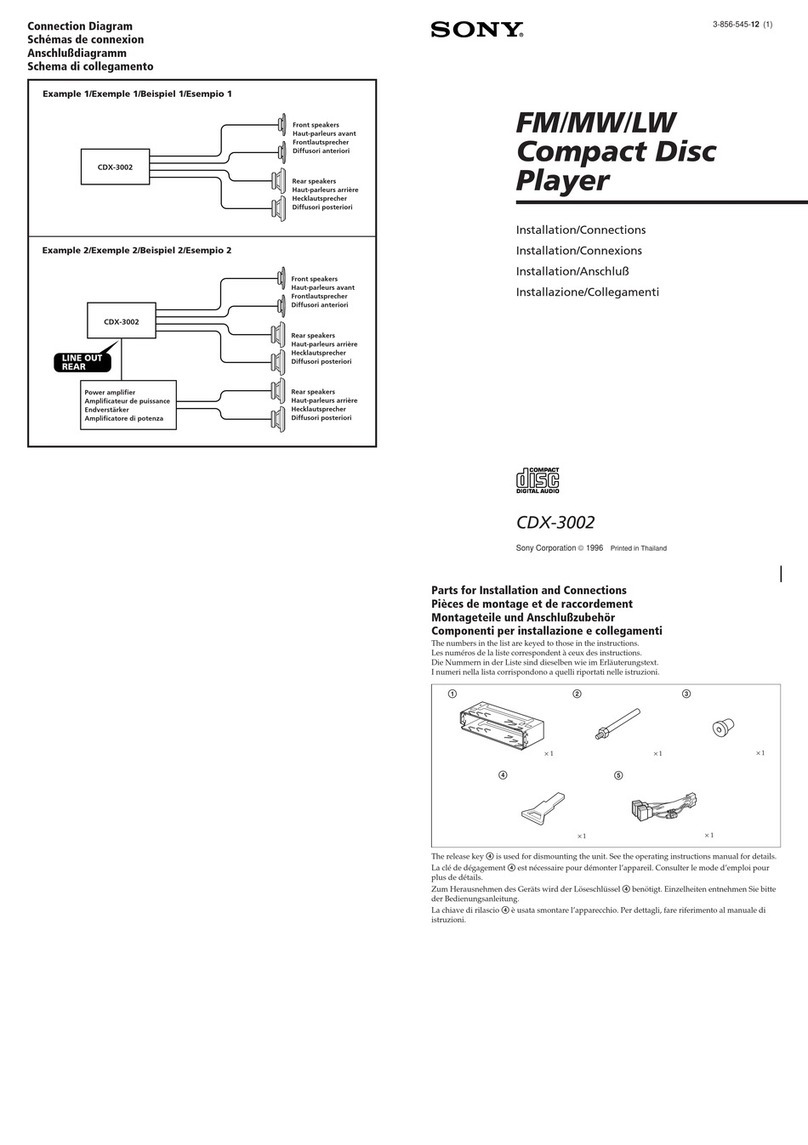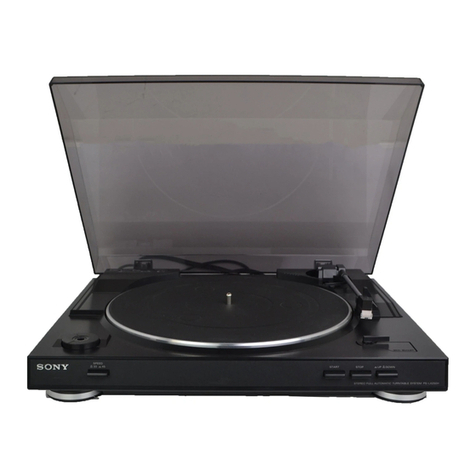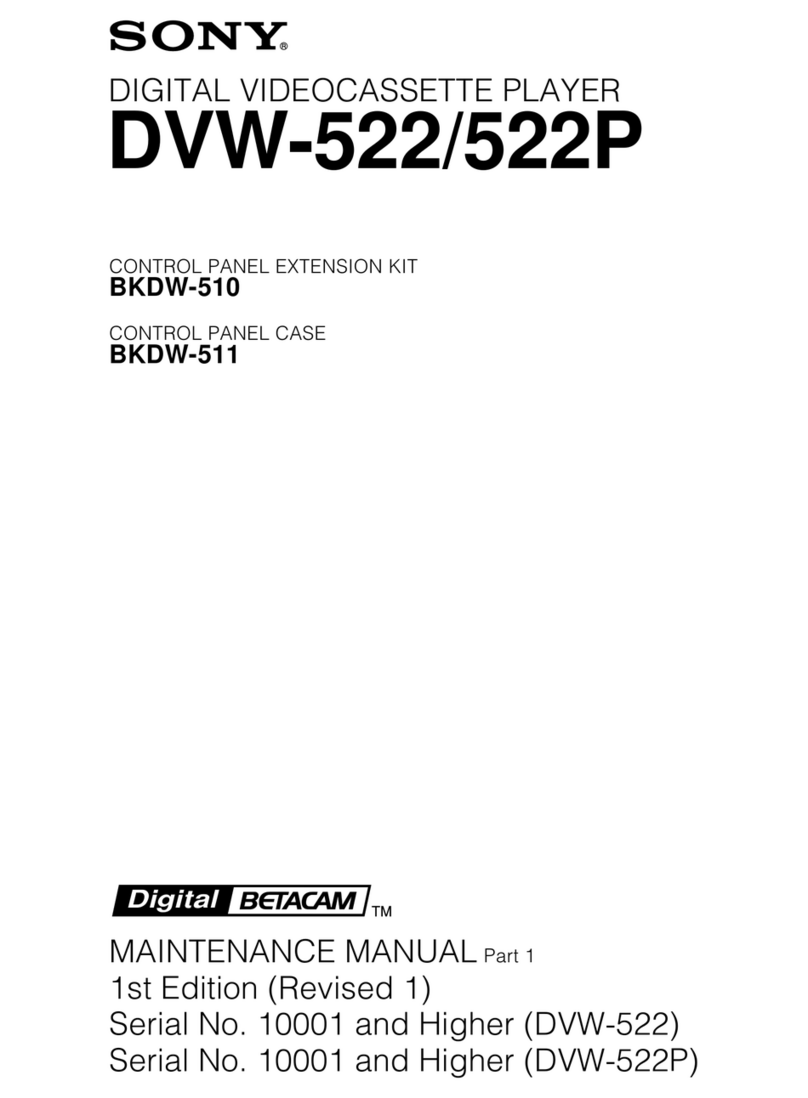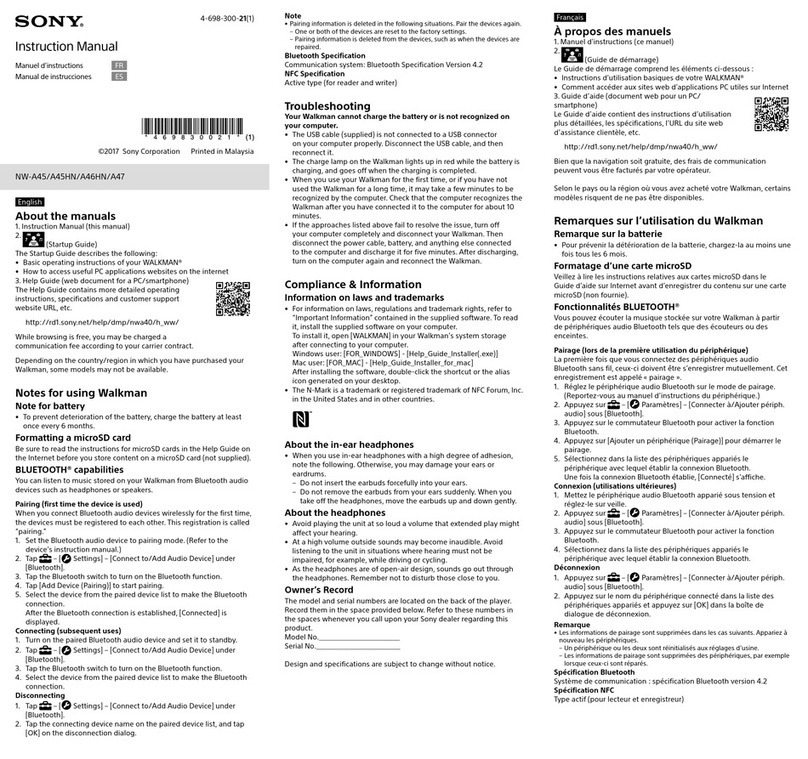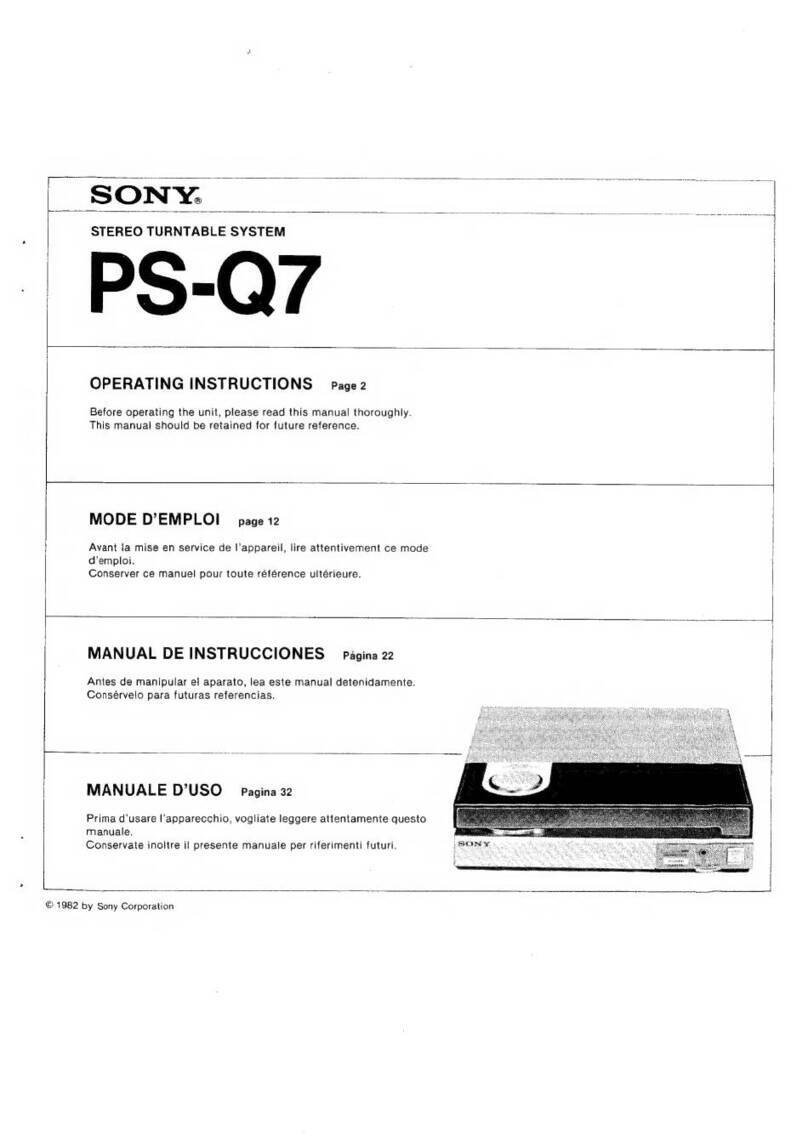
2
MDX-F5800
Notes on chip component replacement
•Never reuse a disconnected chip component.
•Notice that the minus side of a tantalum capacitor may be dam-
aged by heat.
Flexible Circuit Board Repairing
•Keep the temperature of the soldering iron around 270 °C dur-
ing repairing.
•Do not touch the soldering iron on the same conductor of the
circuit board (within 3 times).
•Be careful not to apply force on the conductor when soldering
or unsoldering.
SAFETY-RELATED COMPONENT WARNING!!
COMPONENTS IDENTIFIED BY MARK 0OR DOTTED
LINE WITH MARK 0ON THE SCHEMATIC DIAGRAMS
AND IN THE PARTS LIST ARE CRITICAL TO SAFE
OPERATION. REPLACE THESE COMPONENTS WITH
SONY PARTS WHOSE PART NUMBERS APPEAR AS
SHOWN IN THIS MANUAL OR IN SUPPLEMENTS PUB-
LISHED BY SONY.
1. SERVICING NOTES............................................... 3
2. GENERAL
Location of Controls ....................................................... 4
3. DISASSEMBLY
3-1. Disassembly Flow ........................................................... 11
3-2. Sub Panel Assy ................................................................ 12
3-3. Mechanism Deck (MG-165A-138) ................................ 12
3-4. MAIN Board ................................................................... 13
3-5. SERVO Board ................................................................. 13
3-6. MD Cover Assy ............................................................... 14
3-7. Float Block ...................................................................... 14
3-8. Lever (LE23) Assy .......................................................... 15
3-9. Holder Assy ..................................................................... 15
3-10. Chucking Arm Assy ........................................................ 16
3-11. Optical Pick-up (KMS-242E) ......................................... 16
3-12. SL Motor Assy (Sled) (M902),
SP Motor Assy (Spindle) (M901) ................................... 17
4. ELECTRICAL ADJUSTMENTS
Test Mode ........................................................................ 17
MD Section ..................................................................... 17
Tuner Section .................................................................. 17
5. DIAGRAMS
5-1. Block Diagram – SERVO Section – ............................... 18
5-2. Block Diagram – MAIN Section – ................................. 19
5-3. Block Diagram – PANEL/BUS CONTROL/
POWER SUPPLY Section – ........................................... 20
5-4. Note for Printed Wiring Boards and
Schematic Diagrams ....................................................... 21
5-5. Schematic Diagram – SERVO Section (1/2) –............... 22
5-6. Schematic Diagram – SERVO Section (2/2) –............... 23
5-7. Printed Wiring Boards – SERVO Section – ................... 24
5-8. Printed Wiring Boards – MAIN Section – ..................... 25
5-9. Schematic Diagram – MAIN Section (1/3) –................. 26
5-10. Schematic Diagram – MAIN Section (2/3) –................. 27
5-11. Schematic Diagram – MAIN Section (3/3) –................. 28
5-12. Printed Wiring Board – SUB Board – ............................ 29
5-13. Schematic Diagram – SUB Board – ............................... 29
5-14. Printed Wiring Board – KEY Board –............................ 30
5-15. Schematic Diagram – KEY Board – .............................. 31
6. EXPLODED VIEWS
6-1. Chassis Section ............................................................... 45
6-2. Front Panel Section ......................................................... 46
6-3. Mechanism Deck Section-1 (MG-165A-138)................ 47
6-4. Mechanism Deck Section-2 (MG-165A-138)................ 48
6-5. Mechanism Deck Section-3 (MG-165A-138)................ 49
7. ELECTRICAL PARTS LIST ............................... 50
TABLE OF CONTENTS
This label is located on the bottom of the
chassis.
This product is classified as a
CLASS 1 LASER PRODUCT.
CAUTION INVISIBLE
DO NOT STARE INTO BEAM OR
VIEW DIRECTLY WITH OPTICAL INSTRUMENTS
LASER RADIATION WHEN OPEN
This label is located on the drive unit’s internal
chassis. (Refer to below figure)
Caution label
– Upper view –
During service do not take the Optical Pick-up Block apart and do
not adjust the APC circuit. If there is a breakdown in the APC
circuit (including laser diode), replace the entire Optical Pick-up
Block (including SERVO board).



